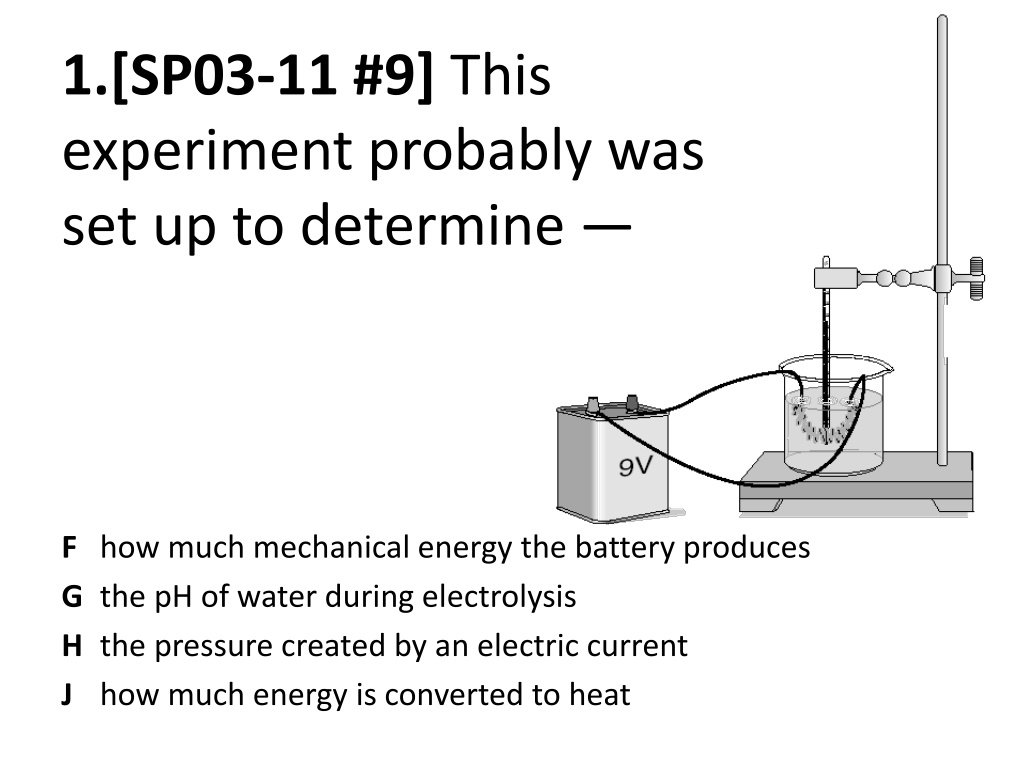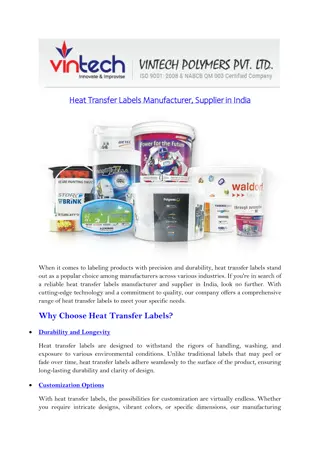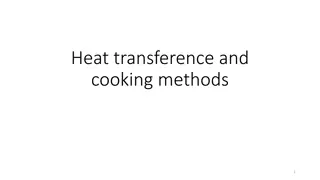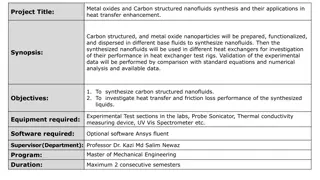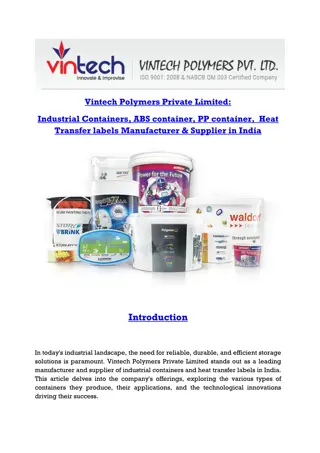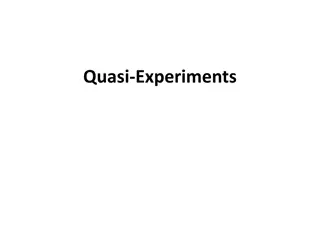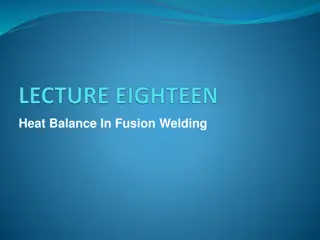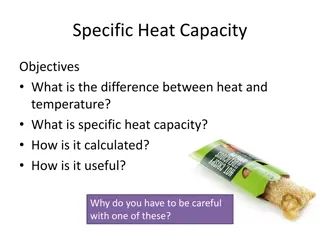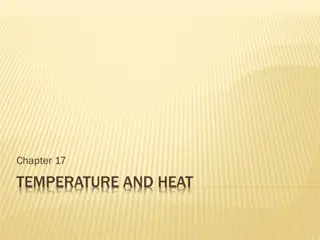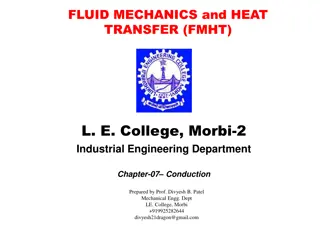Understanding Heat Transfer in Scientific Experiments
Explore various scientific experiments related to heat transfer, including determining energy produced by batteries, heat convection in gases and liquids, detecting warmth through a door, energy transformations in the Earth system, and optimizing solar heaters. Learn about conduction, convection, radiation, and insulation in different contexts.
Download Presentation

Please find below an Image/Link to download the presentation.
The content on the website is provided AS IS for your information and personal use only. It may not be sold, licensed, or shared on other websites without obtaining consent from the author. Download presentation by click this link. If you encounter any issues during the download, it is possible that the publisher has removed the file from their server.
E N D
Presentation Transcript
1.[SP03-11 #9] This experiment probably was set up to determine F how much mechanical energy the battery produces G the pH of water during electrolysis H the pressure created by an electric current J how much energy is converted to heat
2.[SP03-11 #43] Heat convection occurs in gases and liquids. Heat convection does not occur in solids because solids are unable to A absorb heat by vibrating B transfer heat by fluid motion C emit radiation by reflecting light D exchange heat by direct contact
3.[SP04-10 #33] A man who was sleeping wakes up because he hears the smoke alarm go off in his house. Before opening the bedroom door, the man feels the door to see whether it is warm. He is assuming that heat would be transferred through the door by F G H J conduction convection radiation compression
4.[SP04-11 #52] Assuming the chart contains all energy transformations in the Earth system, how much solar radiation goes toward evaporating water? A 40,000 terajoules B 92,410 terajoules C 121,410 terajoules D 133,410 terajoules
5.[SP03-11 #50] A solar heater uses energy from the sun to heat water. The heater s panel is painted black to F G reduce the heat loss by convection currents H improve absorption of infrared radiation J reduce the heater s conducting properties improve emission of infrared radiation
6.[SP04-11 #42] In which container is the substance unable to transfer heat by convection?
7.[JY04-11 #43] Container P and Container Q each were filled with 0.5 liter of water. The water was heated to 90 C. The table shows the temperatures after both containers were allowed to cool for 3 minutes. Compared to Container Q, Container P is a better F conductor G absorber H radiator J insulator
8.[SP03-10 #2] The primary way liquids and gases transmit heat is by the process of A reflection B conduction C radiation D convection
9.Molten rock rises in Earths mantle and then sinks back toward the core in a circular pattern, as shown in the diagram. This method of heat transfer is known as F conduction G vibration H radiation J convection
10. Heat energy is transferred from the hot end of a metal wire to the cool end through A radiation B reflection C conduction D convection
11. Heat cannot spread through a solid by convection because A a heated solid turns into a liquid B atoms in a solid possess maximum kinetic energy C heat is rapidly lost from solids through radiation D particles of a solid are fixed in a rigid structure
12. Mud at the bottom of a fishpond has a temperature of 15 C. After a week of colder air temperatures, the mud temperature drops to 12 C. Which of the following methods of heat transfer is most responsible for the change in the mud temperature? A Water convection B Air conduction C Water reflection D Ground radiation
13. In winter the air just above the top bunk of a bunk bed is warmer than the air just above the bottom bunk because warm air rises. Which of the following describes the method of heating that causes this difference in temperature? F Radiation from the room G Heat transfer through the walls H Convection currents in the room J Heat conduction through the bed
14. The transfer of heat by the movement of air currents in Earth s atmosphere is an example of A conduction B convection C radiation D fusion
15. After 15 minutes the food coloring in Beaker A is evenly spread throughout the beaker, while Beaker B contains a thin layer of food coloring only at its bottom. These observations support the theory that convection currents in a fluid form more quickly if the fluid has A warmer layers at the bottom B a covering on its surface C reduced pressure on the bottom D contact with a cooler surface
Answer key: 1. 2. 3. 4. 5. J B F A H 6. 7. 8. 9. 10. C D J D J 11. D 12. A 13. H 14. B 15. A
